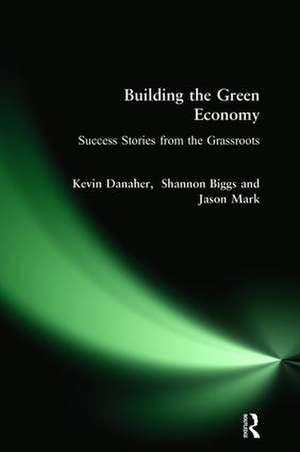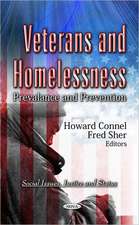Building the Green Economy: Success Stories from the Grassroots
Autor Kevin Danaher, Shannon Biggs, Jason Marken Limba Engleză Hardback – 2 oct 2017
| Toate formatele și edițiile | Preț | Express |
|---|---|---|
| Paperback (1) | 240.80 lei 6-8 săpt. | |
| Taylor & Francis – sep 2007 | 240.80 lei 6-8 săpt. | |
| Hardback (1) | 1042.56 lei 6-8 săpt. | |
| Taylor & Francis – 2 oct 2017 | 1042.56 lei 6-8 săpt. |
Preț: 1042.56 lei
Preț vechi: 1479.61 lei
-30% Nou
Puncte Express: 1564
Preț estimativ în valută:
199.56€ • 216.84$ • 167.74£
199.56€ • 216.84$ • 167.74£
Carte tipărită la comandă
Livrare economică 21 aprilie-05 mai
Preluare comenzi: 021 569.72.76
Specificații
ISBN-13: 9781138467828
ISBN-10: 1138467820
Pagini: 282
Dimensiuni: 152 x 229 mm
Greutate: 0.45 kg
Ediția:1
Editura: Taylor & Francis
Colecția Routledge
Locul publicării:Oxford, United Kingdom
ISBN-10: 1138467820
Pagini: 282
Dimensiuni: 152 x 229 mm
Greutate: 0.45 kg
Ediția:1
Editura: Taylor & Francis
Colecția Routledge
Locul publicării:Oxford, United Kingdom
Recenzii
“This is a practical book about on-the-ground successful green businesses and neighborhood initiatives that live sustainability, not just talk it. There are also pages of Crisp interviews with practitioners and thinkers including Rocky Anderson, Mayor of Salt Lake City and Lois Gibbs, the extraordinary organizer against toxics regarding this emerging sub-economy that challenges greed, concentrated power and destruction.”
—Ralph Nader, www.nader.org, Dec 17, 2007
“Like politics, all sustainability is local. A sustaining world can only be measured as the sum of trillions of answers executed at the grassroots level. This book inspires us to look closely for the issues that face us all everywhere.”
—William McDonough, co-author of Cradle to Cradle: Remaking the Way We Make Things
“Building the Green Economy tells the real stories of what is both possible and necessary to restore power (metaphorically and literally) to the people, to save the nation, and save our world. It should be on every American’s ‘A’ reading list.”
—Thom Hartmann, Air America radio host and author of Cracking the Code: The Art and Science of Political Persuasion
“Building the Green Economy: success stories from the grassroots, by Kevin Danaher, Shannon Biggs and Jason Mark will help you see us, humanity, again. It is a manual for those of us who need to remember we are a can-do people, full of intelligence, heart, courage, and, sometimes, wit. A staff of a book, to lean on in these hard times.”
—Alice Walker, author of The Color Purple
—Ralph Nader, www.nader.org, Dec 17, 2007
“Like politics, all sustainability is local. A sustaining world can only be measured as the sum of trillions of answers executed at the grassroots level. This book inspires us to look closely for the issues that face us all everywhere.”
—William McDonough, co-author of Cradle to Cradle: Remaking the Way We Make Things
“Building the Green Economy tells the real stories of what is both possible and necessary to restore power (metaphorically and literally) to the people, to save the nation, and save our world. It should be on every American’s ‘A’ reading list.”
—Thom Hartmann, Air America radio host and author of Cracking the Code: The Art and Science of Political Persuasion
“Building the Green Economy: success stories from the grassroots, by Kevin Danaher, Shannon Biggs and Jason Mark will help you see us, humanity, again. It is a manual for those of us who need to remember we are a can-do people, full of intelligence, heart, courage, and, sometimes, wit. A staff of a book, to lean on in these hard times.”
—Alice Walker, author of The Color Purple
Cuprins
Introduction; Toxic Avengers; Chapter 1 Sick and Tired of Living Next to (S)hell; Chapter 2 Conversation, Lois Gibbs; Chapter 3 Sludge Busters; Chapter 4 Conversation, Gopal Dayaneni; Chapter 5 What You Can Do; Food & Water; Chapter 6 Green Acres In The Windy City; Chapter 7 Conversation, Maude Barlow; Chapter 8 Seeds of Change; Chapter 9 Conversation, Anuradha Mittal; Chapter 10 Loggers & Lizards Find Common Ground; Chapter 11 Green Revolution; Chapter 12 Street Beets; Chapter 13 What You Can Do; From Mean Streets to Green Streets; Chapter 14 Breaking the Chains; Chapter 15 Conversation, Van Jones; Chapter 16 Participatory Budgeting & Direct Democracy; Chapter 17 Culture Shift in the Land of the Giants; Chapter 18 Conversation, Thomas LinzeyEsq.; Chapter 19 Patriot Actions; Chapter 20 What You Can Do; Power to the People; Chapter 21 Give Me an “E”; Chapter 22 Conversation, David Morris; Chapter 23 Beyond Hot Air; Chapter 24 Conversation, Ben Namakin; Chapter 25 Crude Awakening; Chapter 26 Sweden Declares Independence from Oil; Chapter 27 Harnessing the Saudi Arabia of Wind; Chapter 28 What You Can Do; The Freedom of Everyone to Be Enterprising; Chapter 29 Putting Mom and Pop First; Chapter 30 Conversation, Rocky Anderson; Chapter 31 Green Grapes; Chapter 32 No Boss; Chapter 33 Conversation, Omar Freilla; Chapter 34 “Your Business Plan Is Complete Garbage”; Chapter 35 Conversation, Michael Shuman; Chapter 36 What You Can Do; conclusion Conclusion;
Notă biografică
Kevin Danaher, Shannon Biggs, Jason Mark
Descriere
Organizations of every type struggle to remain relevant in their marketplace. They continuously strive to introduce new products and services at a rate that satisfies their customers. In their search for fresh ideas, organizations often overlook the most significant source of new thought � their employees. Today�s employees are knowledgeable and able to see opportunities or solutions to problems. This book describes a process for turning "great ideas" into actionable proposals. It presents a simple, but powerful set of questions that has proven to deliver a never-ending stream of inspiration to an organization.Although formal processes for project initiation, execution, and completion may be firmly embedded in an organization�s project life cycle, little is said about project origins. In Project Identification, the author provides a formal process that encourages and enables all of your employees, from the corporate suite to the college hire, to participate in the innovation process. The book presents a mechanism for identifying and capturing great ideas and inspired thought as new project proposals. It provides you with a repeatable process to organize, evaluate, and then select candidate projects for initiation.In the first part of the book, the author describes the complete project life cycle and explains how the Project Identification process complements the formal Project Management methodology. The book then presents a series of questions that guide the decision-making process for identifying new projects. For each question, the author includes an example from a real proposal that demonstrates how to craft useful content.The book concludes by explaining how to capture and manage each of the formal proposals and make sure they are properly considered. It details the transition of a candidate project to a live effort, ready for project initiation. This book can help streamline how your organization conceptualizes and approves















